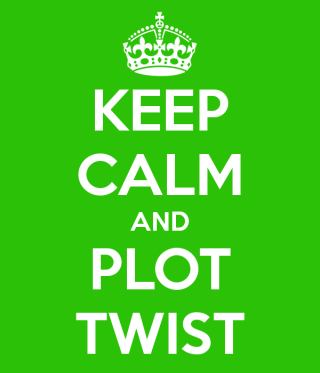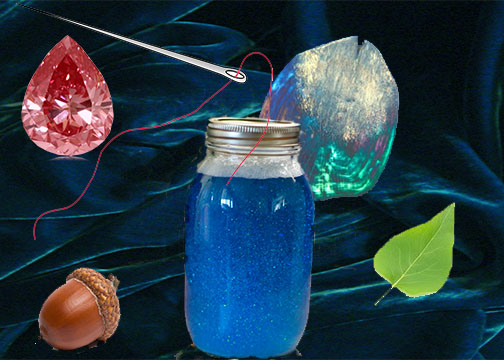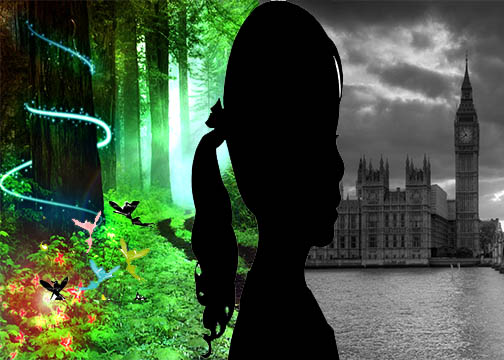Monthly Archives: April 2014
Krevolin
For Exact, the part of How to Adapt Anything into A Screenplay that I feel most connected to were the Act III Goals in the act-by-act analysis that Krevolin put forth. The goals for the final act include:
1. A headlong rush to the finish
2. The climax is biggest moment; you have to know it and write backward and know ending before you start
3. There needs to be a sense of resolution; all loose ends need to be tied up
4. A clear resolution is the outcome of a positive crisis that empowers protagonist so succeed, a decision that shows emotional growth
5. Clearly define the rules of the world and be consistent with them
6. Ending is consistent with the theme, and it must be biggest part of the movie and most emotionally powerful
I really want to focus on these goals because they deal primarily with the end of the movie, and how the audience will feel either after having finished reading your screenplay, or leaving the movie theater after watching your adaptation of the big screen. This is especialy true for my adaptation of Peter Pan, because even though, at this point, most of the flash had already happened, this is one of the most emotional parts of the work, because Peter looks on at a real family, something that he can never have despite all of the friends and the lost boys. Not only that, but all of the characters need to really experience emotional growth: Wendy deicing to grow up, the Lost Boys leaving Neverland, and Peter letting them go. This deals with the choice and detours that are essential to a work having the quality of Exact.
Experience
In this post, I want to look at how Calvino and his theories of Exact relate to my adaptation of Peter Pan. Firstly, here are three principles of Exact:
1. A well-defined/calculated plan for the work
2. An evocation of clear, memorable visual images
3. A precise language, expression of subtleties in language
I really want to focus on the second principle,where is something is exact, it will bring to mind a very clear image. I believe that this ties into my adaptation because even after Wendy leaves Neverland, and Peter, behind her, she still wants to remember all of the fun, amazing times she had there and with him. Exact is also the process of the infinite, an impression of infinite space that is imaginary but pleasurable. I also believe that this is connected to my adaptation in that Wendy, even after she forgets the actual events that transpired on Neverland, she will never forget the feelings that she felt there, the joys and sadness’s that will stay with her forever. She also thought about Neverland and Peter throughout the rest of her life, because that is something that stays with you for your whole life. In being Exact, there is endlessness with the problems that you have not resolved yet, and Wendy will dwell upon her choice.
Blox
Cornell
Most of Joseph Cornell’s work conveyed a single, overarching theme: nostalgia. He longed for the past, a time where things were simpler, and that translated into his works. I tried to illuminate that feeling into my Blox for Exact, while also taking inspiration from Cornell’s Museum Box’s. Museum box’s focus on collecting and positioning objects that have some meaning. Interesting things should be arranged to evoke the theme of the box. While objects in the box don’t have to be literal, they should represent feelings and dreams. The things in the box should represent important events that mean something special to you.
I took this all into consideration for my Exactitude Blox for Peter Pan. I wanted to show that even though Wendy has left Neverland, she still has things that help her remember her time there and all of the things that she did. This blox represents a memory box that Wendy must have kept after her time, and has numerous objects that represent her time with Peter: the needle & thread that she used to sew his shadow onto him after it went AWOL, a small jar of pixie dust to remember when they went flying over London, a jewel they took from the pirates after her, Peter, and the Lost Boys defeated them, a leaf from Neverland, a mermaid scale she took after they tried to down her, and the acorn that Peter had given her to represent a kiss. The purpose of this blox was show Wendy’s nostalgia for her childhood adventures on Neverland, much like the feeling that is evoked in Cornell’s box’s.
Krevolin
In order to make a movie, and therefore a screenplay, compelling, is having numerous twists and turns the suprise the audience and keep them engaged with the plot throughout the story. I felt that this really tied into Multiple, because this allows for, and often strongly encourages, many detours in the plot that contribute to the overall work. The work should not be super predictable,  because that would make the audience lose interest, and quickly, while having a few, well thought out and placed twists and turns will keep the viewer of the edge of their seats, wanting more, and that is the success of a screenplay writer comes through.
because that would make the audience lose interest, and quickly, while having a few, well thought out and placed twists and turns will keep the viewer of the edge of their seats, wanting more, and that is the success of a screenplay writer comes through.
For my adaptation of Peter Pan, I feel that this is especially appropriate, because it has already been adapted numerous times, and I want to give a good twist to it to make it all the more engaging, even if they have already seen it. This is where Multiple comes in, because I can use these detours to make it different, and have it stand out from the previous movies.
Experience
How Multiple connects to Peter Pan is that literature wants to realize the ancient desire to represent the multiplicity of relationships both in effect and potentiality, and that, as people, we are combinations of experiences events, books, and imagination. I believe this is especially true for Wendy Darling, for it is her stories and the fact that she is female that gets her and her brother’s whisked away to Neverland, filled with things that are right out of her books. But, while she is in Neverland, a place where she can never grow old, she begins to have feelings that are a lot more than just plain affection for Peter Pan, and is then faced with the choice of whether or not to return to the real world or stay in Neverland forever. Wendy is facing multiple decisions for what she wants to do: remain in Neverland as a girl, and never grow old, but also never feel the warmth of another person’s love, or go back to her home in London to grow up, become a woman, but have all of the joys of family and life.
Peter himself has the choices as well, but ultimately decides to stay in Neverland because that is where he knows he belongs, even though he loses almost all of his companionship. The Lost Boys return to London with the Darling’s. and are adopted into their family, giving them family that they never had before because of their time on Neverland as well as being orphans before hand. And, as Peter watches through the window, he see’s what is beyond him forever, and that he has made his final choice.
There could not have been a lovelier sight; but there was none to see it except a little boy who was staring in at the window. He had ecstasies innumerable that other children can never know; but he was looking through the window at the one joy from which he must be for ever barred.
Blox
Cornell
For the Visible Blox, I took a lot of inspiration from Cornell’s Habitat Blox’s. Because Cornell was a naturalist, he took a lot of inspiration and materials from the outdoors, and used a lot of them in his work. For mine, I really wanted to show how the books the Darling children read came to life in Neverland. They read about pirates, Indians, mermaids, and many more, all of which manifested themselves on Neverland. Therefore, I placed a book with turning pages in front of a backdrop of a magical forest, with faeries, a pirate ship, a Native American figure, and a mermaid all seemingly bursting from the books pages.
In the Habitat Blox’s, Cornell uses both artificial and natural elements to juxtapose them. The magical forest would be completely natural, with elements from the outdoors: flowers, leaves, and twigs, while the character pieces, such as the Native American and the ship would be actual figurines, with the book as the main focal point of the Blox.
Krevolin
When thinking of the quality Visible and relating it to Krevolin’s work, I thought of “The Big 7” questions. These questions are to help the writer of the screenplay fully delve into their characters and allow for viewer to connect with the character as well as developing the story and plot. The rule that stuck out the most to me for the quality of Visible was number 3, “Who/what keeps [the main character] from achieving what [she] wants?” Wendy Darling, the main character of Peter Pan despite its title, at first wants to not grow up, while also wanting the affections of Peter. While trying to gain the love of Peter, she faces many obstacles that come from the storybook characters that she loves, from the mermaids in Mermaid Lagoon who try to drown her, to Tinkerbell the fairy who schemes with Captain Hook to keep Wendy and Peter apart, as well as competing with Native American princess Tiger Lily for Peter’s attention.
Not only do these help move the story along through Krevolin’s methods, they also give reason to the existence of these fanciful images, and further make them real. This not only gives backstory, but provides rich imagery and visuals that connect very well to the story. Even the main antagonist, Captain Hook, benefits from this because the fact the he is an evil pirate seemingly lifted from a children’s book makes him comical instead of super frightening, which relates to the child-like whimsy I am trying to portray in my adaptation.


